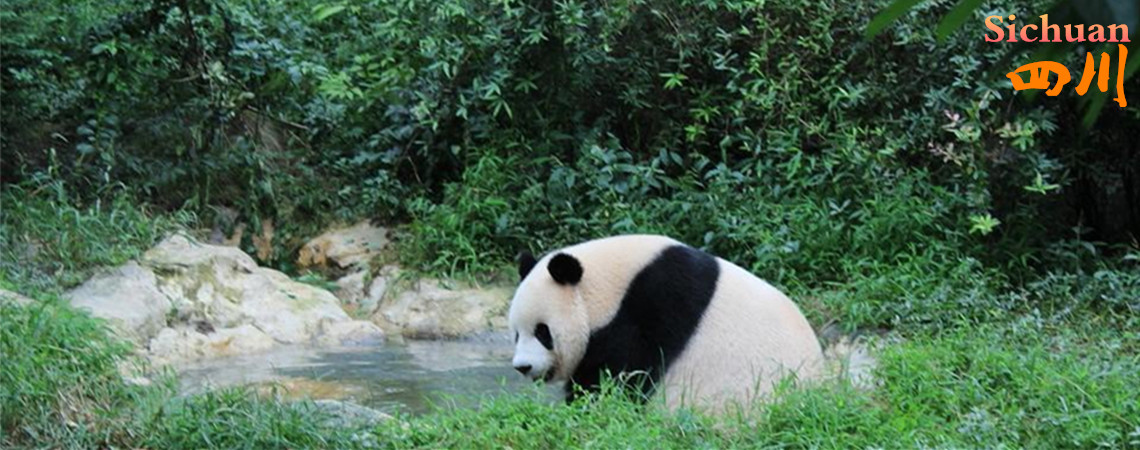Skype: neodalle-travel
Tel: +86 135 7447 2266
E-mail: sales@visitaroundchina.com

Bashu Culture of Sichuan
The civilization along the Yangtze River and the Yellow River nurtures its diverse and magnificent Ba-Shu culture.In the long process of history, Sichuan is a place of talents. Many historical figures were born in Sichuan, grew up in Sichuan, governed various areas in Shu, or visited Shu, leaving us with historic sites and memorials, beautiful lines and famous poems. Li Taibai grew up here and learned swordplay before sailing down the Yangzi River, and Du Gongbu felt homesick here upon seeing the full moon. Historical figures, such as Chen Ziang, Bai Juyi, Su Dongpo, Lu Fangweng, Huang Tingjian, Yang Sheng’an, Zhang Daqian and Guo Moruo, have enlightened the romantic land like splendid and bright stars. The last words of Liu Bei, Zhuge Liang's Northern Expeditions, Huangze Temple for Empress Wu Zetian, Bell-Ringing in the Mountains by Emperor Xuanzong of the Tang Dynasty, the Death of Mongke Khan, stories about these loyal or wicked souls, their prosperity and decline and joys and sorrows were left in the dense forest, white wave and grand palaces and have been told by the wind, rain towers, and evening drum and morning bell in the monastery…
Grottos Culture of Sichuan
Numerous grotto statuaries, stone carvings, and art of paintings in Sichuan reflect the evolution of religion. The grottoes of Sichuan are of large scale. Some houses thousands of intricately carved reliefs, most being Buddha and his disciples and a few being Taoists and Confucius. Figure statues carved during the Tang and Song dynasties are of the largest scale and well-preserved and have a broad reach. The influential ones are the following: Leshan Stone Carvings and Rongxian Stone Carvings in Tang and Song Dynasties, Jiajiang Thousand Buddha Rock in the Tang Dynasty, Guangyuan Thousand Buddha Rock in the Northern and Southern Dynasties and the Tang Dynasty, and lately developed Anyue Grottoes in Tang and Song Dynasties. Another characteristic of Sichuan rock carvings is that they are tall and big and gouged against mountains. For example, the world’s largest Buddha, Leshan Giant Buddha, is 71 m high and was carved in the Tang Dynasty; the world’s second largest Buddha, Rongxian Giant Buddha, is 36.67 m high and was carved in the Northern Song Dynasty; Anyue Grottoes are mainly stone inscriptions, the so-called “scripture grottoes” (stone carving scripture). Sichuan rock carvings are exquisite and intact, the culmination of China’s carvings art. A few ancient murals have been preserved in Chengdu Daci Temple and Jiange Zhaojue Temple built in the Tang Dynasty, and Pengxi Baofan Temple built in the Song Dynasty. According to historical records, among them, the murals in Daci Temple were the most spectacular, praised by Su Shi as “exquisite and exceptional”. Unfortunately, most of the mural was destroyed in wars during the Ming and Qing Dynasties.
Ancient Mausoleum Culture of Sichuan
There are also quite a few imperial mausoleums in Sichuan. Relatively large ones are the following: the Mausoleum of Emperor Zhaolie (Liu Bei 161-223 AD) of the Han Dynasty in the south of Chengdu, historically known as the “Huiling Mausoleum”; the Mausoleum of Emperor Wang Jian (847-918 AD) of the Former Shu Dynasty of the Five Dynasties period in the Western suburb of Chengdu, known as the “Yongling Mausoleum”; the Mausoleum of Meng Zhixiang (893-934 AD) of the Later Shu Dynasty of the Five Dynasties period at Mopan piedmont in the Northern suburb of Chengdu, known as the “Heling Mausoleum”. There is a rich hoard of cultural relics in these tombs, especially the best preserved tomb of Wang Jian, providing valuable historical materials to study the culture of the Five Dynasties.
Ethnic Minority Culture of Sichuan
Sichuan is a multi-ethnic settlement, with 55 ethnic minorities and a population of 4.908 million. The Yi, Tibetan, Qiang, Miao, Hui, Mongolian, Tujia, Lisu, Manchu, Naxi, Buyi, Bai, Zhuang and Dai are minorities that have been living here for generations. Sichuan has the only Qiang Autonomous Region, the largest Yi Autonomous Region and the second largest Tibetan Region in China. Ethnic minorities live mainly in Liangshan Yi Autonomous Prefecture, Ganzi Tibetan Autonomous Prefecture, Aba Tibetan and Qiang Autonomous Prefecture and Muli Tibetan Autonomous County, Mabian Yi Autonomous County, Ebian Yi Autonomous County and Beichuan Qiang Autonomous County.
 Ask Questions ?
Ask Questions ?